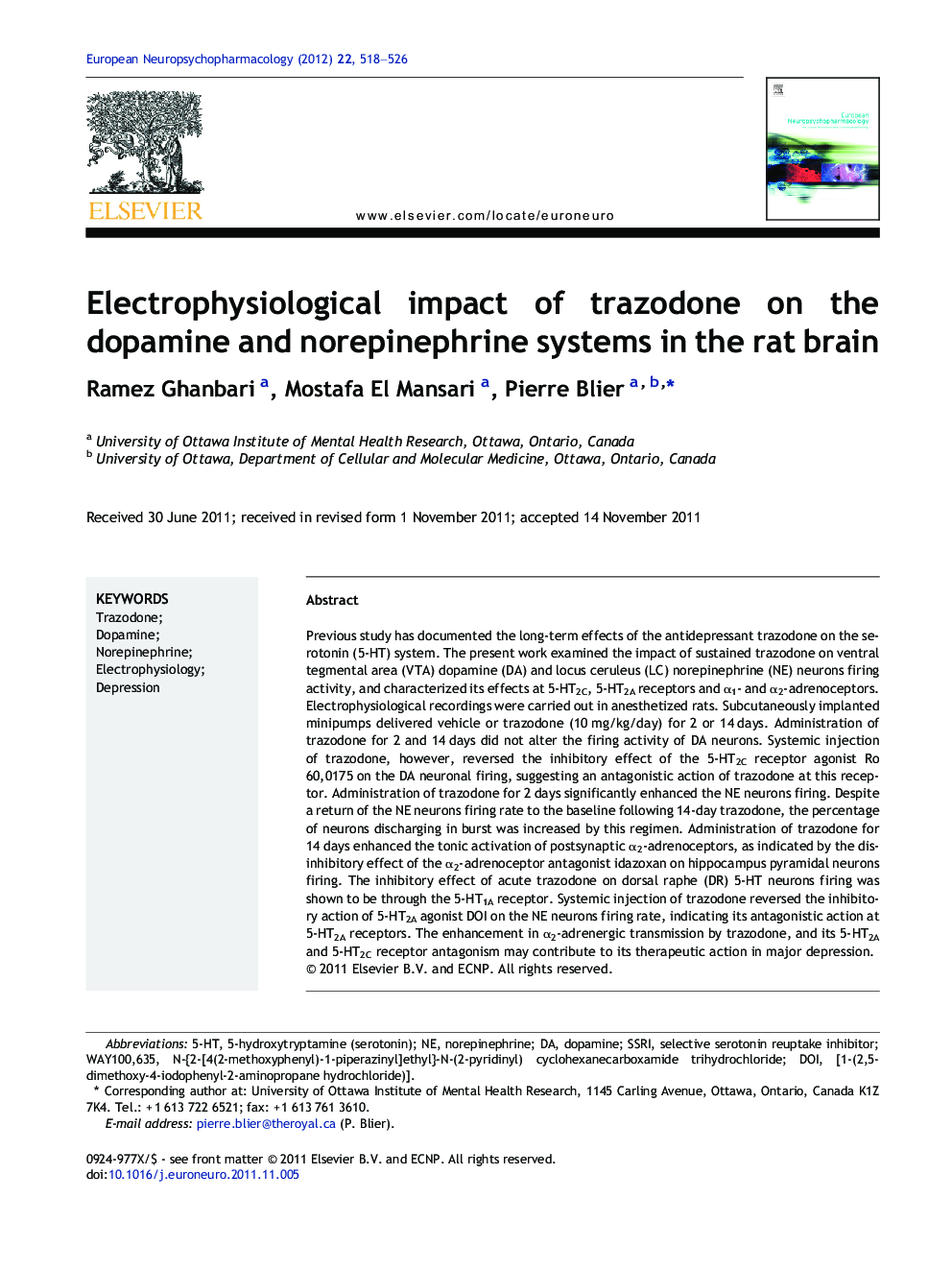| Article ID | Journal | Published Year | Pages | File Type |
|---|---|---|---|---|
| 320554 | European Neuropsychopharmacology | 2012 | 9 Pages |
Previous study has documented the long-term effects of the antidepressant trazodone on the serotonin (5-HT) system. The present work examined the impact of sustained trazodone on ventral tegmental area (VTA) dopamine (DA) and locus ceruleus (LC) norepinephrine (NE) neurons firing activity, and characterized its effects at 5-HT2C, 5-HT2A receptors and α1- and α2-adrenoceptors. Electrophysiological recordings were carried out in anesthetized rats. Subcutaneously implanted minipumps delivered vehicle or trazodone (10 mg/kg/day) for 2 or 14 days. Administration of trazodone for 2 and 14 days did not alter the firing activity of DA neurons. Systemic injection of trazodone, however, reversed the inhibitory effect of the 5-HT2C receptor agonist Ro 60,0175 on the DA neuronal firing, suggesting an antagonistic action of trazodone at this receptor. Administration of trazodone for 2 days significantly enhanced the NE neurons firing. Despite a return of the NE neurons firing rate to the baseline following 14-day trazodone, the percentage of neurons discharging in burst was increased by this regimen. Administration of trazodone for 14 days enhanced the tonic activation of postsynaptic α2-adrenoceptors, as indicated by the disinhibitory effect of the α2-adrenoceptor antagonist idazoxan on hippocampus pyramidal neurons firing. The inhibitory effect of acute trazodone on dorsal raphe (DR) 5-HT neurons firing was shown to be through the 5-HT1A receptor. Systemic injection of trazodone reversed the inhibitory action of 5-HT2A agonist DOI on the NE neurons firing rate, indicating its antagonistic action at 5-HT2A receptors. The enhancement in α2-adrenergic transmission by trazodone, and its 5-HT2A and 5-HT2C receptor antagonism may contribute to its therapeutic action in major depression.
